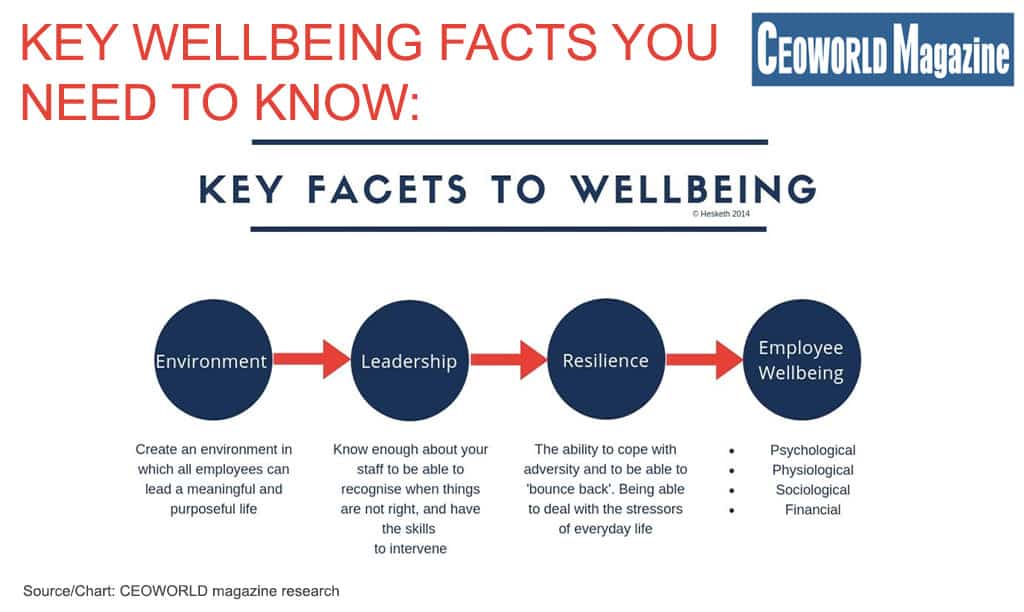Optimizing Your Return On People Investment

“The two most important days in your life are the day you are born and the day you find out why.” (Twain, 1835-1910).
If you have responsibility for people and depend on their productivity and performance as a staple of your organization you must have heard about the criticality of employee wellbeing.
Wellbeing is the single most important aspect of anyone’s life and this includes life in the workplace, where after all, we spend a significant amount of our lives. In my research I have sought to explore what key aspects of wellbeing impact most greatly on an employee’s working life. In my experience, following three key principles can result in improved workplace performance, better relationships with employees and a greater loyalty towards the organization. The good news is that these principles are dependent on a basic knowledge of wellbeing, they do not cost a fortune and can be embedded quickly and effectively.
So, what are these three critical aspects? The first is concerned with creating the right environment in the workplace, one where employees can experience genuine and authentic meaning and purpose in their working lives. The second is leadership alignment to the business and the values of the organisation. Investment in line manager training that majors on how to treat people with dignity and respect, fostering a growth mindset and allowing innovation and creativity. This will produce huge dividends. The final aspect is of personal resilience, and the fact that this plays a key role in all we do, both inside and outside of work. It is important to note that resilience is not like a faucet, where one can switch it on or download a measured dose; it is far more nuanced than that. The good news is this can be taught and people can learn how to improve their own resilience.
I will now unpack each of these in a little further detail.
- Creating the Environment
This can refer to both the physical environment and the psychological environment; how people are made to feel. Perhaps summarised impeccably by the late Maya Angelou, an author, poet and civil rights activist,
“I’ve learned that people will forget what you said, people will forget what you did, but people will never forget how you made them feel.” (Angelou, 2012).
These words sum up perfectly what creating the right environment truly means. An environment in which people can connect their own meaning and purpose in life to what they are doing in the workplace. Creating an environment where employees feel connected; they identify with the company or brand and feel energised in their commitment towards it. One of the areas that can provide a tell-tale sign for this is how employees speak about their organisation outside of the workplace, with their friends or family. Are they positive or dismissive? Do they promote it, feel proud of it, and feel like they belong? These are great ways to test if you are creating that environment. - Leadership
Probably the most closely related of our three associations with wellbeing is that of leadership. It is without doubt that the relationship workers have with their immediate line manager is the one that can impact most on their wellbeing. The relationship can be the key to happiness, positivity, commitment, productivity and performance. Therefore, it is well worth the investment in your leaders, at all levels. In its simplest view, leadership can be seen as the ability to know enough about your directs to be capable of spotting when things are not quite right. This can be with yourself, or others you work with and for, as well as those in your charge. Further, knowing how, once spotted, you can intervene both quickly and effectively is the key to great leadership for wellbeing. This can be quite an art, and a science of course! As the late Warren Bennis, an American author, scholar and organisational consultant famously noted of leadership,
“Leadership is like beauty; it’s hard to define, but you know it when you see it.” (Bennis, 1989). - Resilience
The word itself has roots in the Latin verb, resilire — to rebound and I am talking about personal resilience rather than organizational. Resilience has been researched for well over forty years now, so there is an awful lot known about it. Largely, it boils down to how the brain works, how we think and process information and how we react. The well-known narrative around fight, flight, freeze and appease. Michael Taft, an expert in therapeutic neuroscience, noted at the 2017 Neuroscience Summit that:
“We have learnt more about the brain in the last 15 years than we have in the whole of human history.” (Taft, 2017).
In my research I refer to resilience with notions of ability, capacity and ‘bouncing back.’ As with the other aspects, resilience can be improved with training, and there is also evidence that higher levels of resilience can improve performance and enhance psychosocial functioning.
To conclude, optimizing your investment in people can be achieved with a focus on three broad themes, those of creating the right environment, leadership and personal resilience.
Written by Dr. Ian Hesketh.
Have you read?
# Countries With The Highest Average Life Expectancies In 2030.
# The World’s Best Performing Companies 2019.
# The World’s Safest Cities Ranking, 2019.
# World’s Most Luxurious Hotels, 2019.
Bring the best of the CEOWORLD magazine's global journalism to audiences in the United States and around the world. - Add CEOWORLD magazine to your Google News feed.
Follow CEOWORLD magazine headlines on: Google News, LinkedIn, Twitter, and Facebook.
Copyright 2025 The CEOWORLD magazine. All rights reserved. This material (and any extract from it) must not be copied, redistributed or placed on any website, without CEOWORLD magazine' prior written consent. For media queries, please contact: info@ceoworld.biz









